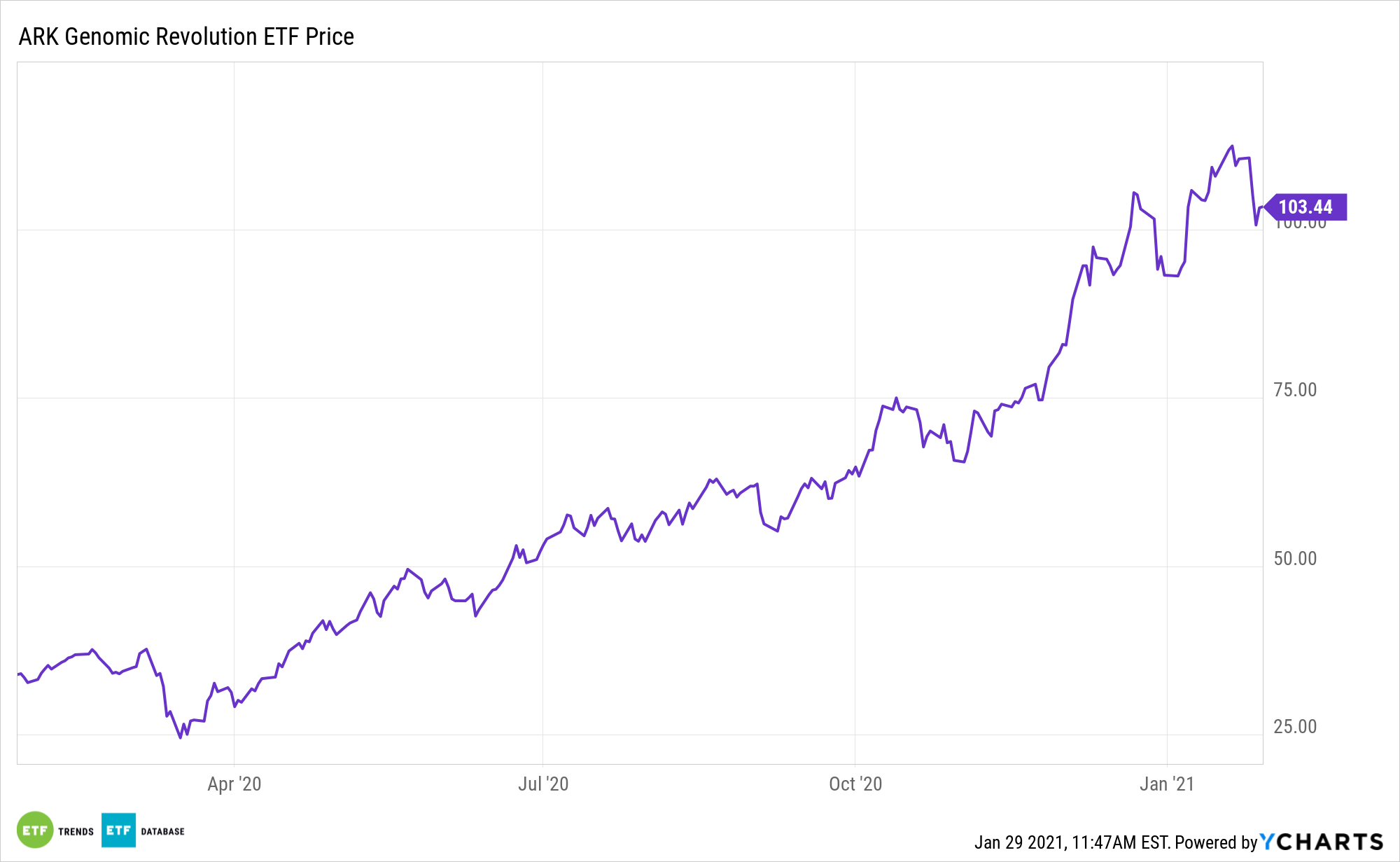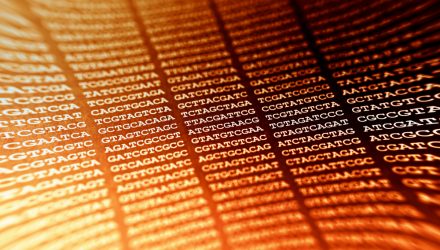Next generation sequencing (NGS) is here, and its long-term evolution could spark significant upside for exchange traded funds like the ARK Genomic Revolution Multi-Sector Fund (CBOE: ARKG).
Long DNA is a new frontier in the genomics space, but it’s applications are critical given the role genetics plays in treating an array of diseases.
“ARK believes long-read technology offers superior accuracy, more comprehensive variant detection, and a richer set of features than short-read platforms. By the end of 2025, highly-accurate long and short-read sequencing should approach cost-parity,” according to ARK Investment Management.

The Always Alluring ARKG
Next generation DNA sequencing could set the stage for a new era in medicine given its accuracy, cost-effectiveness, and soon—affordability.
ARKG tracks equity securities of companies across multiple sectors, including health care, information technology, materials, energy, and consumer discretionary, that are relevant to the fund’s genomics theme. The active management team behind the ARKG strategy combines a top-down and bottom-up research methodology to identify innovative companies and convergence across markets.
“We estimate that long-read revenues will grow 82% at an annual rate, from $250 million in 2020 to roughly $5 billion in 2025,” notes ARK.
ARKG includes companies that merge healthcare with technology and capitalize on the revolution in genomic sequencing. These companies try to better understand how biological information is collected, processed, and applied by reducing guesswork and enhancing precision.
Cost convergence patterns by way of Wright’s Law are likely to bolster the case for long read sequencing in the coming years, making it more accessible to a broader swath of clinicians and patients.
“Driven primarily by improvements in cost and throughput, LRS’s unique capabilities should galvanize broader adoption. LRS (a) does not require amplification, (b) will detect methylation natively, and (c) will span full RNA molecules,” adds ARK. “According to ARK’s estimates, the cost to sequence a whole human genome with long-read technology will drop to $100-$200, its accuracy superior to SRS across all variant types by the end of 2025.”
There are also widespread applications for LRS, including pediatric care, rare diseases, genetic diseases, and structural variations, among others.
For more on disruptive technologies, visit our Disruptive Technology Channel.
The opinions and forecasts expressed herein are solely those of Tom Lydon, and may not actually come to pass. Information on this site should not be used or construed as an offer to sell, a solicitation of an offer to buy, or a recommendation for any product.

